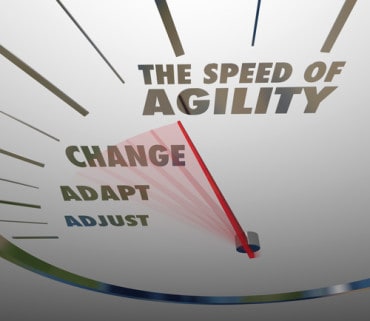
Red Hat’s introduction of automated Policy as Code is a strategic response to the evolving complexities of modern IT landscapes. It streamlines governance and compliance and simplifies the management of hybrid cloud and AI workloads.
During last week’s Red Hat Summit, Red Hat announced a new feature for its Ansible Automation Platform: automated Policy as Code. This addition is set to significantly streamline policy enforcement across hybrid cloud setups, which are increasingly integrating AI applications. With this development, Red Hat addresses the complex challenges of managing sprawling IT environments, ensuring that policies and compliance are consistently maintained as AI technologies scale.
Policy as Code is designed to automate the intricacies of governance, allowing businesses to adapt to changing requirements while securing their infrastructures against potential risks. This introduction marks a strategic enhancement to Red Hat’s offerings, promising to bolster security and efficiency across diverse computing environments.
A Quick Background on Policy as Code
Policy as Code is an approach to managing and automating the policies that govern IT and business operations. This method codifies rules and procedures so that organizations can apply them more consistently across their infrastructures. It has two significant benefits:
- Automation of Governance: Automating the enforcement of governance standards ensures compliance is integral to system configuration and operation. It also eliminates the need for manual oversight, which reduces instances of human error.
- Consistency and Scalability: Codified policies are applied uniformly, regardless of where the system resides within the hybrid cloud environment. This uniformity is crucial as enterprises scale up their operations and integrate more complex AI-driven systems.
There’s a reason companies are interested in Policy as Code—IT environments are becoming highly complex. The challenges of managing policies in dynamic IT environments include:
- Complex Systems: Modern IT infrastructures are highly dynamic and distributed, making consistent policy enforcement challenging.
- Rapid Change: The fast pace of technological advancement and frequent updates to laws and regulations demand agile policy management that can quickly adapt.
- AI Integration: As AI applications become more prevalent, they introduce additional layers of complexity and potential for non-compliance due to their autonomous nature.
Policy as Code addresses these challenges by providing a framework that integrates policy enforcement directly into the deployment and management processes. This makes it an essential practice for managing modern, sprawling IT systems effectively.
The Role of Ansible Automation Platform
Red Hat’s Ansible Automation Platform marks a significant advancement in how policies are managed across hybrid cloud and AI environments, specifically strengthening compliance and operational efficiency. Here are the highlights.
Integration with Policy as Code:
- Automated Enforcement: The Ansible Automation Platform automates the application of policies, ensuring that governance is seamlessly integrated into every phase of the infrastructure management process.
- Scalability and Consistency: By codifying policies, Ansible allows organizations to apply consistent standards across diverse environments, crucial for managing sprawling, complex systems.
The platform continues to evolve. Here are past innovations:
- Red Hat has continually evolved the Ansible platform to address the growing needs of IT operations, introducing features that enhance automation and reduce the reliance on manual processes.
- Innovations like Event-Driven Ansible and Red Hat Ansible Lightspeed demonstrate Red Hat’s commitment to simplifying complex IT tasks and bridging skills gaps, setting the stage for integrating Policy as Code.
Plus, the impact on hybrid cloud and AI workloads will be substantial:
- Simplified Compliance: Policy as Code simplifies the governance of hybrid cloud architectures by automating compliance checks and adjustments, reducing the administrative burden on IT teams.
- Enhanced Security for AI Applications: As AI applications are increasingly integrated into critical processes, ensuring these systems adhere to compliance and security standards is paramount. Policy as Code provides a robust framework to manage these requirements efficiently.
And finally, companies can look forward to operational benefits:
- Reduction of Errors: Automating policy management minimizes human intervention, thereby reducing the potential for errors that can lead to security breaches or non-compliance issues.
- Enhanced Security Posture: Automated policies ensure that security measures are consistently applied, improving the organization’s overall security posture.
- Bridging the Skills Gap: By automating complex compliance tasks, Ansible reduces the need for specialized knowledge, thereby mitigating the impact of the skills gap in IT teams.
Future Implications and Community Engagement
Red Hat’s integration of Policy as Code into the Ansible Automation Platform sets a strategic course for future IT automation and AI trends. As enterprises increasingly adopt AI technologies, the need for robust policy management frameworks becomes crucial. Policy as Code provides the necessary infrastructure to support these evolving technologies, ensuring they are implemented securely and in compliance with relevant standards.
Strategic Direction:
- Adapting to Future Trends: Policy as Code’s flexibility allows Red Hat to stay ahead of emerging IT trends by providing adaptable and scalable solutions. This positions Red Hat favorably as enterprises seek more integrated and automated IT management solutions.
- Enhancing AI Strategies: With AI technologies becoming integral to enterprise IT, comprehensive policy management is needed. Policy as Code ensures these AI systems operate within established guidelines, enhancing their reliability and trustworthiness.
Community and Partner Engagement:
- Community Collaboration: Red Hat actively engages with the open-source community to refine and expand the capabilities of Policy as Code. This collaboration fosters innovation and ensures that the solutions remain relevant to the needs of modern IT operations.
- Partner Integration: Red Hat works closely with partners to integrate best practices and standards into Policy as Code, enhancing its effectiveness and reach. Upcoming tech previews allow partners and customers to test new features and provide feedback, which is crucial for continuous improvement.
- Stakeholder Involvement: Red Hat encourages its stakeholders to participate in advocacy groups and community forums, where they can share insights, learn best practices, and influence the future development of Policy as Code capabilities.
This proactive approach aligns with Red Hat’s strategic direction and strengthens its position as a leader in enterprise IT automation. By focusing on community and partner engagement, Red Hat ensures that its innovations in Policy as Code are impactful and aligned with the broader goals of the IT community.
Setting the New Standard in IT Automation and Compliance
Red Hat’s introduction of automated Policy as Code is more than an innovation; it’s a strategic response to the evolving complexities of modern IT landscapes. By streamlining governance and compliance, Red Hat simplifies the management of hybrid cloud and AI workloads and sets new standards for security and efficiency in IT operations. This proactive approach ensures that Red Hat remains at the forefront of enterprise IT automation, ready to meet the challenges of tomorrow’s IT demands.



























